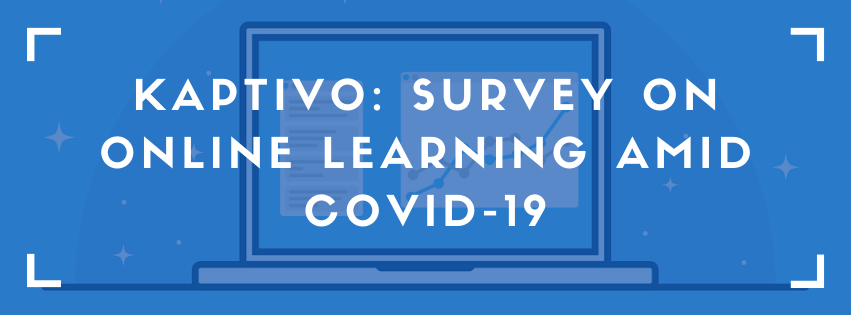Globally, more than 1.2 billion children are unable to attend classes due to the Covid-19 pandemic. The need to flatten the curve has led to school closures, forcing teachers and students to transition to online learning. Despite annual e-learning days in countries such as the US and Singapore, educators, students, and parents had much to adapt to as online learning became the norm for several weeks. As we settle into the new normal, some of us may wonder about how teachers have been coping with online learning.
Kaptivo, an online whiteboard service similar to HeyHi, published a survey involving 116 respondents from six countries in April 2020. These countries comprise the USA, UK, Germany, Croatia, Spain, and Australia (see Figure 1). Kaptivo conducted this study to understand the sentiments towards online learning among teachers.
These 116 respondents teach students of various education levels (see Figure 2):
- Primary/Elementary school (6%)
- Secondary/High school (20%)
- University (69%)
Despite how rapidly teachers had to modify their lesson plans and shift classes online, a vast majority (90%) of teachers were either ‘hopeful,’ ‘reasonably confident,’ or ‘completely confident’ of executing lessons online (see Figure 3).
Interactive online learning
In a regular classroom, teachers have to compete with distractions in the form of laptops, tablets, and smartphones. As classes shift online, the challenge to capture students’ attention increases. As expected, 50% of respondents have signalled their intentions of ensuring that at least half of their lessons will be interactive (see Figure 4).
As Dr Eric Mazur from the Harvard School of Engineering and Applied Sciences states in his masterclass in 2014, “Active learning, not passive [learning] makes it impossible to sleep through a class.” By ‘active learning’, Mazur refers to a situation where students participate and interact with both teachers and other students as opposed to students silently listening as the teacher speaks. Mazur argues that interactive learning sustains students’ interests and thus enhances their learning experience.
Teachers responding to the survey echo similar sentiments, citing the following benefits of interactive online lessons (see Figure 5):
- Enable teachers to gauge their students’ level of understanding
- Students can obtain answers to their queries immediately
- Students can learn from their classmates
Whiteboards: Online vs. physical classroom setting
In a regular classroom setting, an overwhelming majority (87%) of teachers indicate that they use a physical whiteboard with markers at least ‘frequently’ (see figure 6). Therefore, one would assume that teachers would likewise use an online whiteboard as a teaching aid for virtual classes.
However, only 4% of teachers in the survey use Kaptivo’s online whiteboard service (see Figure 7), indicating the possibility that many teachers are unaware of online substitutes for physical whiteboards. This finding suggests that a vast majority of educators may have never heard of online whiteboards and how they can value-add students’ learning.
The low takeup rate of online whiteboards also corresponds to a majority of teachers (52%) that view interactive learning as an obstacle to delivering effective online lessons (see Figure 8). For these teachers who experience difficulty in helping students feel engaged in online classes, an interactive online whiteboard that facilitates collaborative learning may be just the thing students need.
HeyHi’s Online Whiteboard
An analysis of this survey suggests that many teachers are unaware of the benefits of interactive online whiteboards. Now, it is our pleasure to introduce you to HeyHi’s online whiteboard, a platform that also enables teachers to host video conferences with students.
By incorporating both video conferencing and online whiteboard functions within one application, HeyHi’s online whiteboard strives to replicate the level of interaction present in a physical classroom.
At any point in time, multiple students can access the online whiteboard to contribute their input with a variety of tools at their disposal. These tools include a pen, highlighter, laser pointer, and text boxes. Even though students are not in the same classroom physically, HeyHi’s online whiteboard and its collaborative features can help students to interact with both the teacher and their peers.
If students have queries about their written work, they can also upload a photo or PDF of their answers for the teacher to address. Once a student shares his/her written solution, the teacher can annotate and mark up the answer with symbols and comments. Students can thus learn from each other’s mistakes as the teacher offers live feedback for the assignments that have been shared. The teacher may even direct students to evaluate each other’s work.
With an online whiteboard, the possibilities for increasing the level of engagement among students are endless and entirely up to the creativity of teachers.
Summary
To recap some of the survey’s findings:
- A majority of teachers aim to introduce opportunities for interaction in their online lessons
- Teachers recognise the benefit of interactive lessons
- Few teachers are aware that there are online whiteboard services such as Kaptivo and HeyHi
Overall, this survey hints at the untapped potential of online whiteboards and their ability to facilitate student-to-student and student-to-teacher interactions in virtual classrooms. If you would like to give HeyHi’s online whiteboard service a try for your next online lesson, please request a demo or even experience the user interface for yourself!
